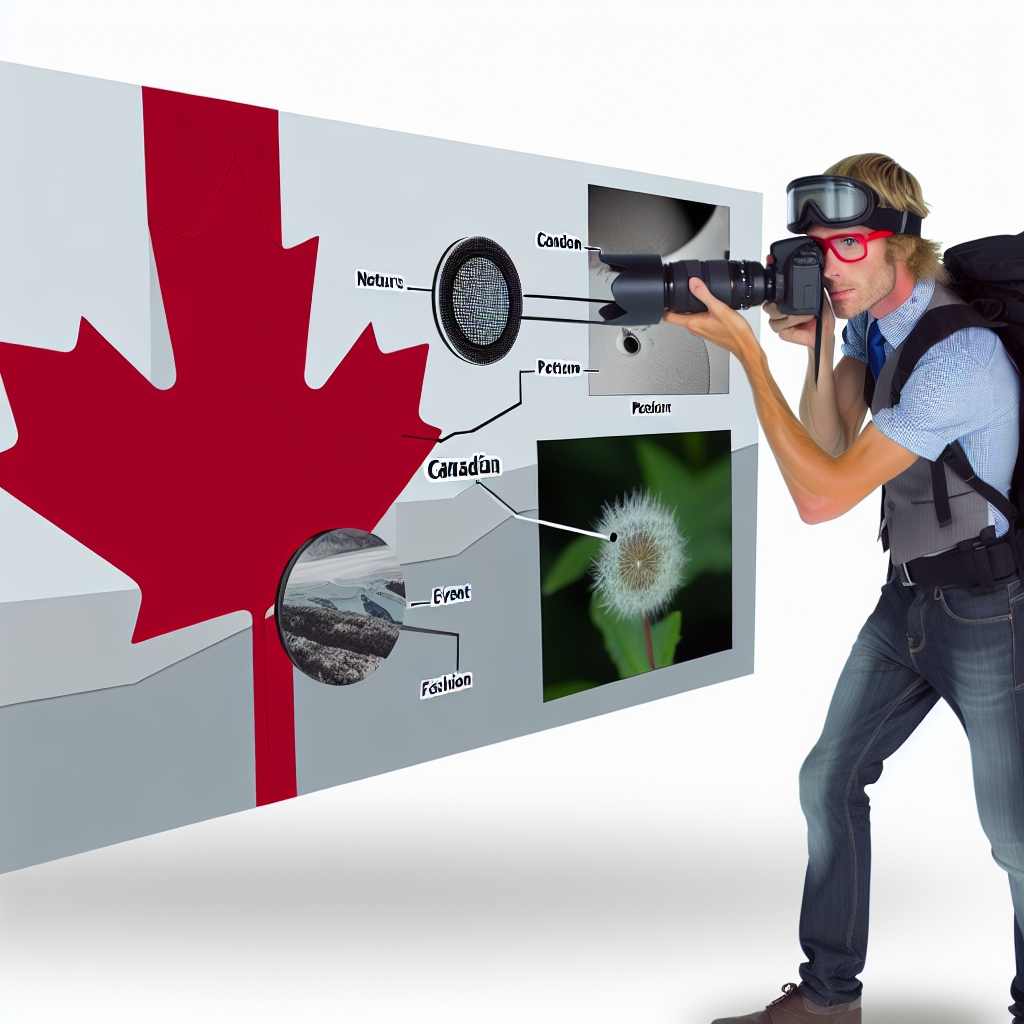Identifying Emerging Trends in Photography Niches
Understanding Current Market Demands
Photography remains an evolving art form driven by technological advancements.
Understanding current trends helps photographers align their services accordingly.
Clients increasingly seek specialized photography styles tailored to their needs.
For example, many businesses now focus on product photography for online retail.
This shift highlights the demand for high-quality images to enhance online presence.
Exploring Unique Photography Specialties
Several niche markets have emerged in the photography industry recently.
Drone photography has gained popularity for its stunning aerial perspectives.
Real estate agents frequently use drone images to showcase properties effectively.
Moreover, pet photography allows photographers to capture beloved animals uniquely.
This niche taps into the emotional connection people have with their pets.
Recognizing Social Media Influences
Social media platforms significantly influence photography trends today.
Visual content has become essential for brands aiming to engage audiences.
Instagram, in particular, has paved the way for influencer and lifestyle photography.
As a result, photographers who specialize in social media content thrive.
Adapting to Technological Innovations
Technological advancements continually shape the photography landscape.
Smartphone cameras have improved drastically, democratizing photography.
However, professional photographers can differentiate themselves with advanced techniques.
Incorporating editing software allows for creative expression and refinement.
Emphasizing Sustainability in Photography
More photographers focus on sustainable practices within their work.
This approach fosters an environmentally conscious ethos in the industry.
Using eco-friendly materials and promoting nature photography resonates with clients.
Consumers value brands that address sustainability in their messaging.
Understanding the Demand for Event Photography Services
Growing Popularity of Events
Event photography is increasingly in demand across various industries.
Corporate events often require professional photography to capture key moments.
Weddings and private parties also create a strong need for skilled photographers.
Unlock Your Career Potential
Visualize a clear path to success with our tailored Career Consulting service. Personalized insights in just 1-3 days.
Get StartedIn addition, community events like festivals attract photographers keen to document activities.
This growth reflects a broader trend towards professional documentation of personal and professional milestones.
Target Markets for Event Photography
Several target markets seek event photography services actively.
Corporations often need photographers for conferences, product launches, and team-building events.
Couples planning weddings typically invest in professional photography for their special day.
Nonprofits organize fundraising events and rely on photographers for publicity.
Moreover, families often want photographers to capture milestone celebrations such as anniversaries and reunions.
Trends Influencing Event Photography Demand
Many trends significantly influence the demand for event photography services.
The rise of social media encourages individuals and businesses to share high-quality images.
Consequently, event photographers become essential for creating appealing content.
Furthermore, video content is gaining traction, prompting photographers to offer video services.
This shift allows photographers to diversify their offerings and attract more clients.
Challenges in the Event Photography Market
Despite its growth, the event photography industry faces several challenges.
Many photographers encounter stiff competition from emerging talents.
Additionally, advancing technology has made photography equipment more accessible.
This accessibility brings new photographers into the market, increasing competition.
Moreover, understanding client needs and delivering on expectations can be challenging.
Market Opportunities for Photographers
Event photography services remain a lucrative niche within the broader photography industry.
As demand continues to grow, opportunities for established and newbie photographers are expanding.
By understanding market needs and trends, photographers can position themselves for success.
Exploring the Growth of Real Estate Photography
Current Market Trends
The real estate market is evolving rapidly.
As more properties are purchased and sold, the demand for quality images rises.
Agents seek captivating visuals to attract potential buyers.
This shift makes professional photography essential in real estate listings.
The Importance of High-Quality Images
High-quality images communicate the property’s value effectively.
They highlight unique features and create an emotional connection.
Potential buyers respond better to professionally staged visuals.
This creates an impression of quality and care in the property presentation.
Benefits for Real Estate Agents
Investing in real estate photography provides various advantages.
It can lead to quicker sales and higher offers.
Angie Peters, a local agent, reports significant increases in client interest.
Moreover, quality photos can enhance an agent’s professional reputation.
Emerging Photography Techniques
Real estate photographers are adopting innovative techniques.
Aerial imagery and virtual tours are gaining popularity.
These methods offer a comprehensive view of the property and surroundings.
Additionally, 3D imaging is becoming a game changer in showcasing homes.
Challenges in Real Estate Photography
Despite its benefits, real estate photography has challenges.
Lighting and staging can impact the visual outcome significantly.
Moreover, capturing the essence of a space can be challenging.
Photographers often face tight deadlines, requiring swift decision-making.
The Future of Real Estate Photography
The future looks promising for real estate photography.
Technological advancements will continue to enhance image quality.
As remote viewings become standard, virtual photography will play a key role.
With ongoing change, real estate photography will remain a lucrative niche.
See Related Content: Building a Personal Brand as a Canadian Fashion Designer
The Rise of Personal Branding Photography for Influencers
Understanding Personal Branding Photography
Personal branding photography captures the essence of an individual’s brand.
This genre helps influencers present a unique visual identity.
It’s vital for establishing a strong online presence.
Therefore, professional images drive engagement on social media.
The Growth of Influencer Culture
Influencer culture has exploded in recent years.
Social media platforms like Instagram and TikTok amplify this trend.
As a result, influencers cultivate massive follower bases.
This growth creates increasing demand for distinctive imagery.
Benefits of Personal Branding Photography
- High-quality images set influencers apart from the crowd.
- Consistent branding fosters trust with followers.
- Visually appealing photos boost engagement rates.
- Unique content attracts collaborations with brands.
Key Elements of Effective Personal Branding Photography
Effective personal branding photography requires authenticity.
Images should reflect the influencer’s personality and values.
Cohesive visuals maintain brand consistency across platforms.
Additionally, storytelling enriches the viewer’s experience.
Choosing the Right Photographer
Selecting a skilled photographer is crucial.
Influencers should seek professionals experienced in branding shoots.
Reviewing a photographer’s portfolio helps gauge their style.
Collaboration and communication capabilities also matter.
Future Trends in Personal Branding Photography
Technological advancements shape the future of photography.
For instance, drones offer dynamic perspectives.
Augmented reality also enhances viewer engagement.
Moreover, virtual reality may redefine how audiences interact.
Implications of Personal Branding Photography
Personal branding photography empowers influencers to succeed.
A strong visual identity facilitates connection with audiences.
As the influencer culture evolves, so too will the need for unique images.
This niche in the photography industry holds vast potential.
Learn More: Essential Gear for Beginner Photographers in Canada
Delving into the World of Fine Art Photography as a Business
Understanding Fine Art Photography
Fine art photography elevates images into artistic expressions.
Artists use their creativity to convey emotions and ideas.
This niche demands a unique vision and technical skill.
Through fine art, photographers challenge perceptions and provoke thought.
Art collectors and enthusiasts seek authentic pieces for investment.
Identifying Your Unique Style
Developing a distinctive style sets you apart in the market.
Your focus can range from landscapes to abstract interpretations.
Exploring different genres broadens your artistic perspective.
Experimentation plays a vital role in refining your craft.
Ultimately, authenticity attracts attention and builds credibility.
Building an Online Presence
An online portfolio showcases your work to a global audience.
Social media platforms help photographers connect with enthusiasts.
Regularly sharing your journey creates engagement and interest.
Utilizing blogs can establish your authority in the fine art scene.
Ultimately, a solid web presence drives potential buyers to your work.
Marketing Strategies for Success
Understanding your target audience is essential for effective marketing.
Email campaigns keep subscribers informed about new work and exhibitions.
Collaborating with galleries boosts your visibility to potential buyers.
Participating in art shows fosters connections and generates sales.
Networking with other artists can open opportunities for partnerships.
Navigating Sales and Pricing
Setting the right price reflects the value of your work and time.
Researching market trends can help establish competitive pricing.
Offer both prints and larger original works to cater to various budgets.
Direct sales through your website offer higher profit margins.
Additionally, using online marketplaces can expand your reach significantly.
Engaging with the Art Community
Joining local artist groups fosters support and mentorship opportunities.
Participation in workshops enhances skills and expands your network.
Engaging online in forums creates valuable connections with other photographers.
Collaboration with writers or designers can result in unique projects.
Establishing relationships within the community enhances visibility and growth.
Delve into the Subject: How to Set Competitive Pricing as a Canadian Photographer

Niche Markets: Pet Photography and Its Expanding Popularity
The Rise of Pet Photography
Pet photography is gaining immense popularity among pet owners.
Today, many individuals view their pets as family members.
This shift in perception has spurred a demand for professional pet photographers.
Additionally, social media platforms amplify this trend.
People love sharing pictures of their adorable pets online.
Understanding the Target Audience
The target audience for pet photography includes pet owners of all ages.
Young adults often express a desire for unique pet portraits.
Families seek to capture special moments with their furry friends.
Moreover, senior citizens appreciate the joy a pet brings to their lives.
Understanding these demographics is essential for marketing effectively.
Types of Pet Photography Services
Various photography styles cater to pet owners’ preferences.
Portrait sessions capture the personality of individual pets.
Action shots highlight pets engaged in playful activities.
On-location shoots allow for scenic backgrounds that enhance images.
Furthermore, themed sessions can add creativity and fun.
Marketing Strategies for Pet Photographers
Effective marketing strategies help pet photographers stand out.
Building a strong social media presence is crucial.
Showcasing a portfolio of work attracts potential clients.
Additionally, collaborating with local pet stores enhances visibility.
Offering seasonal promotions can encourage bookings.
The Future of Pet Photography
The pet photography market continues to grow rapidly.
As pet ownership rises, so does the demand for photography services.
Technological advancements will also shape this niche.
For instance, improvements in camera technology facilitate better quality photos.
Ultimately, pet photography presents lucrative opportunities for creative professionals.
Uncover the Details: Collaborating with Brands as a Canadian Content Creator
The Impact of E-commerce on Product Photography
Growing Demand for High-Quality Images
With the rise of e-commerce, the need for quality product photography has surged.
Consumers expect clear and professional images to make purchasing decisions.
Thus, businesses invest more in hiring skilled photographers.
This investment aims to enhance their online presence and appeal.
Understanding Visual Appeal
Visual appeal plays a significant role in capturing audience interest.
Excellent product images help convey brand value and quality.
Moreover, they create an emotional connection with potential buyers.
Therefore, understanding how to showcase products effectively is crucial.
Technology Advancements in Photography
Advancements in technology have transformed product photography.
High-resolution cameras and editing software have become essential tools.
These innovations allow photographers to create stunning visuals.
Furthermore, 360-degree imaging is gaining popularity among online retailers.
The Role of Social Media
Social media platforms significantly influence how products are marketed.
Striking images often lead to increased shares and brand visibility.
Brands are harnessing platforms like Instagram and Pinterest for promotion.
This trend highlights the need for engaging and visually appealing content.
Costs and Budgeting for Product Photography
Budgeting for product photography can vary widely from brand to brand.
Companies must assess their needs and set realistic goals.
Hiring professionals might come at a premium, but often pays off.
On the other hand, some businesses opt for in-house photography teams.
Future Trends in Product Photography
The future of product photography looks bright with emerging trends.
Expect more brands to adopt augmented reality for showcasing products.
Additionally, as remote shopping becomes more mainstream, the quality will matter more.
Consequently, adapting to these changes can give brands a competitive edge.
Analyzing the Role of Social Media in Career Development for Niche Photographers
Building an Online Presence
Social media platforms are essential for niche photographers today.
They provide a way to showcase your unique style and talent.
By sharing high-quality images, you capture the attention of potential clients.
Moreover, consistent posting establishes your brand identity.
Platforms like Instagram and Pinterest are visually-driven, ideal for photographers.
Utilizing appropriate hashtags increases the visibility of your work.
Engaging with the Community
Interaction is key to success on social media.
Engaging with followers fosters a sense of community.
Responding to comments and messages builds rapport with potential clients.
Joining photography-related groups allows for networking and growth.
You can share tips, techniques, and insights to build trust.
Collaboration with other photographers can also expand your reach.
Showcasing Your Work
Highlighting niche photography in your posts attracts targeted clients.
Creating stories or reels can provide behind-the-scenes looks at your process.
Consider using live sessions to demonstrate your expertise.
Such content keeps your audience engaged and informed.
Utilizing user-generated content can enhance authenticity as well.
Marketing Strategies
Social media serves as a robust marketing tool for niche photographers.
Paid advertising on platforms like Facebook can target specific audiences.
Audience insights help tailor your strategy effectively.
Offering workshops or tutorials can establish you as an authority in your niche.
Contests or giveaways can also enhance engagement and visibility.
Tracking Progress and Analytics
Monitoring your social media performance is essential.
Analyze which posts resonate most with your audience.
Adjust your strategy based on feedback and analytics regularly.
Set measurable goals for followers and engagement rates.
This continual assessment helps refine your online presence.




